Growing Borage at Home might sound like a task reserved for seasoned gardeners, but trust me, it’s easier than you think! Imagine stepping outside your door and snipping fresh, vibrant blue star-shaped flowers to garnish your summer salads or infuse your lemonade with a subtle cucumber-like flavor. Sounds delightful, right?
For centuries, borage has been more than just a pretty face. Historically, it was believed to bring courage and joy, with Roman soldiers even drinking borage-infused wine before battle! Beyond its historical significance, borage is a fantastic companion plant in the garden, attracting pollinators like bees and deterring pesky insects.
But why should you consider growing borage at home? Well, for starters, it’s incredibly low-maintenance. Plus, with rising grocery costs and a growing desire for fresh, organic produce, having a readily available source of edible flowers and beneficial herbs is a game-changer. I’m going to share some simple DIY tricks and hacks that will have you harvesting your own borage in no time, even if you’ve never gardened before. Get ready to unlock the secrets to a thriving borage patch right in your backyard!
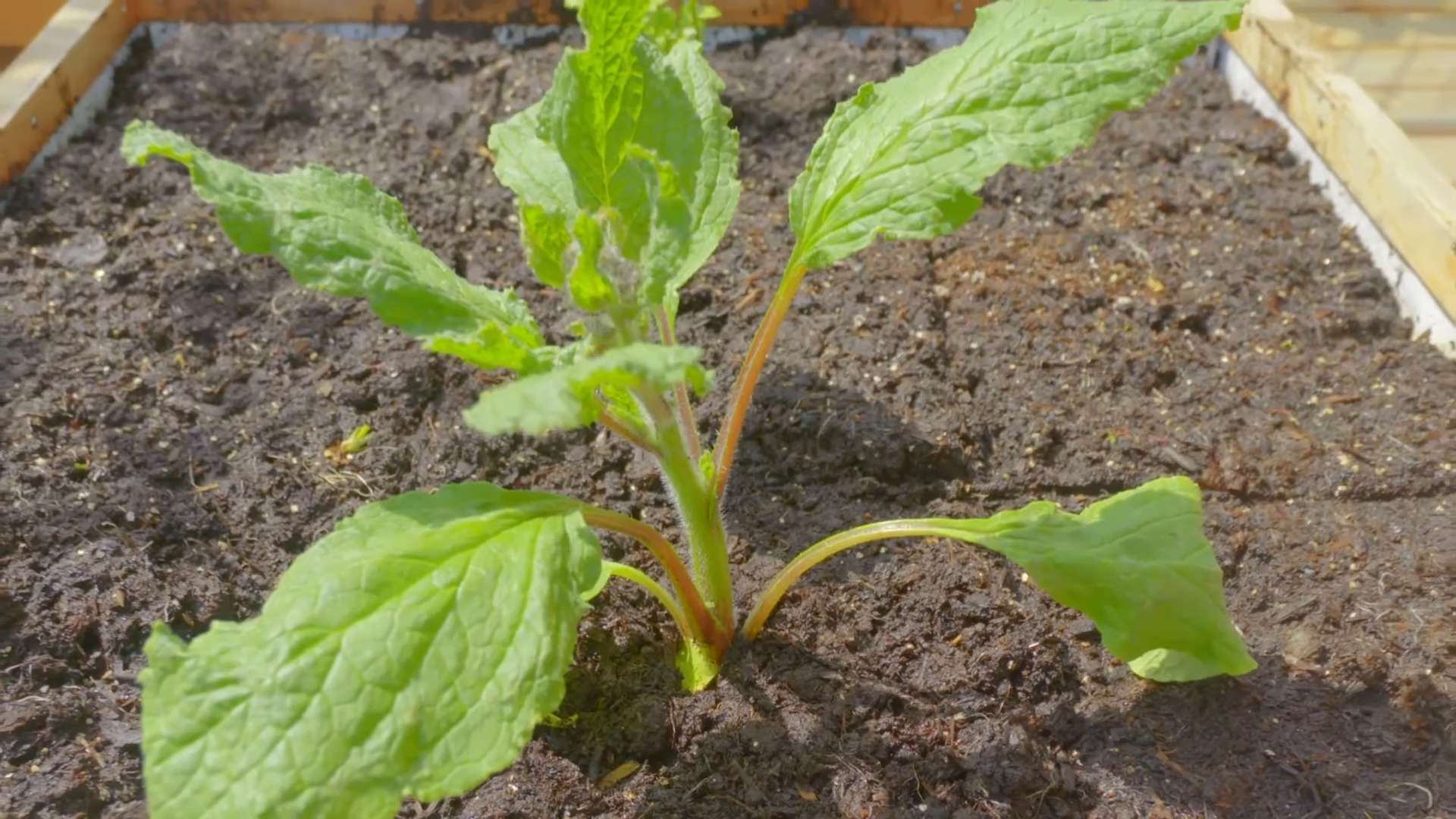
Growing Borage: A Beginner’s Guide to This Bee-Loving Herb
Hey there, fellow garden enthusiasts! I’m so excited to share my experiences with growing borage, also known as starflower. This beautiful herb is not only easy to grow, but it’s also a fantastic addition to any garden, attracting pollinators like bees and adding a unique flavor to your culinary creations. Let’s dive into how you can cultivate this wonderful plant at home!
What is Borage and Why Grow It?
Borage (Borago officinalis) is an annual herb with striking blue, star-shaped flowers. It’s native to the Mediterranean region but has naturalized in many other parts of the world. Beyond its beauty, borage offers several benefits:
* Attracts Pollinators: Bees absolutely adore borage, making it a valuable addition to any garden focused on supporting pollinators.
* Edible Flowers and Leaves: The flowers have a mild cucumber-like flavor and can be used in salads, drinks, and as a garnish. The young leaves can also be eaten, though they can be a bit prickly when mature.
* Soil Improvement: Borage is a dynamic accumulator, meaning it draws nutrients from the soil and stores them in its leaves. When the plant decomposes, these nutrients are released back into the soil, enriching it for future plantings.
* Pest Deterrent: Some gardeners believe that borage can deter certain pests, such as tomato hornworms.
* Medicinal Properties: Traditionally, borage has been used for its medicinal properties, though it’s important to consult with a healthcare professional before using it for medicinal purposes.
Getting Started: Seeds, Soil, and Sunlight
Before we get our hands dirty, let’s gather the essentials:
* Borage Seeds: You can find borage seeds at most garden centers or online.
* Well-Draining Soil: Borage isn’t too picky about soil, but it thrives in well-draining soil that’s rich in organic matter.
* Sunny Location: Borage needs at least 6 hours of sunlight per day.
* Watering Can or Hose: For keeping your borage plants hydrated.
* Gardening Gloves (Optional): To protect your hands.
Step-by-Step Guide to Growing Borage
Here’s a detailed guide to help you grow borage from seed:
1. Starting Seeds Indoors (Optional)
While borage can be directly sown into the garden, starting seeds indoors can give you a head start, especially if you live in a region with a short growing season.
1. Sow Seeds: Fill small pots or seed trays with seed-starting mix. Sow the seeds about 1/2 inch deep. I usually plant 2-3 seeds per pot to increase the chances of germination.
2. Water Gently: Water the soil gently to moisten it, being careful not to dislodge the seeds.
3. Provide Warmth and Light: Place the pots in a warm location, ideally around 65-70°F (18-21°C). You can use a heat mat to speed up germination. Provide plenty of light, either from a sunny windowsill or a grow light.
4. Keep Soil Moist: Keep the soil consistently moist, but not waterlogged.
5. Transplant Seedlings: Once the seedlings have developed a few sets of true leaves (usually after 4-6 weeks), they’re ready to be transplanted outdoors.
2. Direct Sowing Outdoors
Direct sowing is the easiest way to grow borage, and it’s my preferred method.
1. Prepare the Soil: Choose a sunny location in your garden and prepare the soil by loosening it with a garden fork or tiller. Remove any weeds or rocks. Amend the soil with compost or other organic matter to improve drainage and fertility.
2. Sow Seeds: Sow the seeds directly into the soil about 1/2 inch deep and 6-12 inches apart. I like to sow a few extra seeds to ensure good germination.
3. Water Gently: Water the soil gently to moisten it.
4. Keep Soil Moist: Keep the soil consistently moist until the seedlings emerge, which usually takes about 7-14 days.
5. Thin Seedlings: Once the seedlings are a few inches tall, thin them to 6-12 inches apart. This will give them enough space to grow and thrive.
3. Caring for Your Borage Plants
Once your borage plants are established, they’re relatively low-maintenance.
1. Watering: Water regularly, especially during dry periods. Borage prefers consistently moist soil, but avoid overwatering, which can lead to root rot. I usually water deeply once or twice a week, depending on the weather.
2. Fertilizing: Borage doesn’t require heavy fertilization. However, you can give it a boost by applying a balanced organic fertilizer or compost tea every few weeks.
3. Weeding: Keep the area around your borage plants free of weeds. Weeds can compete with the borage for nutrients and water.
4. Deadheading: To encourage continuous blooming, deadhead (remove) spent flowers. This will also prevent the plant from self-seeding too aggressively.
5. Support (Optional): If your borage plants become tall and leggy, you may need to provide support with stakes or trellises.
4. Harvesting Borage
You can start harvesting borage leaves and flowers as soon as the plant is mature enough.
1. Harvesting Leaves: Harvest young leaves in the morning, when they’re at their peak flavor. Use scissors or a sharp knife to cut the leaves from the plant. Be careful of the prickly hairs on the leaves, especially on older plants.
2. Harvesting Flowers: Harvest the flowers when they’re fully open. Gently pluck them from the plant.
3. Using Borage: The flowers and leaves can be used fresh in salads, drinks, and as a garnish. You can also dry the leaves for later use in teas or other culinary applications.
Troubleshooting Common Borage Problems
While borage is generally easy to grow, you may encounter a few problems:
* Powdery Mildew: This fungal disease can affect borage, especially in humid conditions. To prevent powdery mildew, ensure good air circulation around your plants and avoid overhead watering. If you see signs of powdery mildew, treat the plants with a fungicide.
* Aphids: Aphids are small, sap-sucking insects that can infest borage plants. To control aphids, you can spray the plants with insecticidal soap or neem oil.
* Slugs and Snails: Slugs and snails can damage borage leaves. To control slugs and snails, you can use slug bait or handpick them from the plants.
Borage Varieties to Consider
While the common borage (Borago officinalis) is the most widely grown variety, there are a few other options to consider:
* Alba: This variety produces white flowers instead of the traditional blue.
* Variegata: This variety has variegated leaves, adding visual interest to the garden.
Tips and Tricks for Success
Here are a few extra tips to help you grow thriving borage plants:
* Succession Planting: To ensure a continuous supply of borage throughout the growing season, sow seeds every few weeks.
* Self-Seeding: Borage readily self-seeds, so be prepared for new plants to pop up in your garden. If you don’t want it to spread, deadhead the flowers before they go to seed.
* Companion Planting: Borage is a good companion plant for tomatoes, strawberries, and squash. It’s believed to deter pests and attract pollinators to these crops.
* Use Borage as a Green Manure: After the growing season, you can chop down your borage plants and use them as a green manure to enrich the soil.
Enjoying Your Borage Harvest
Now that you’ve successfully grown borage, it’s time to enjoy the fruits (or rather, flowers and leaves) of your labor! Here are a few ideas:
* Borage Flower Ice Cubes: Freeze borage flowers in ice cubes to add a touch of elegance to your drinks.
* Borage Salad: Add borage flowers and young leaves to your salads for a refreshing cucumber-like flavor.
* Borage Tea: Dry the leaves and use them to make a soothing herbal tea.
* Borage Garnish: Use borage flowers as a garnish for cakes, desserts, and other dishes.
Growing borage is a rewarding experience that will add beauty, flavor, and ecological benefits to your garden. With a little care and attention, you can enjoy a bountiful harvest of this wonderful herb. Happy gardening!
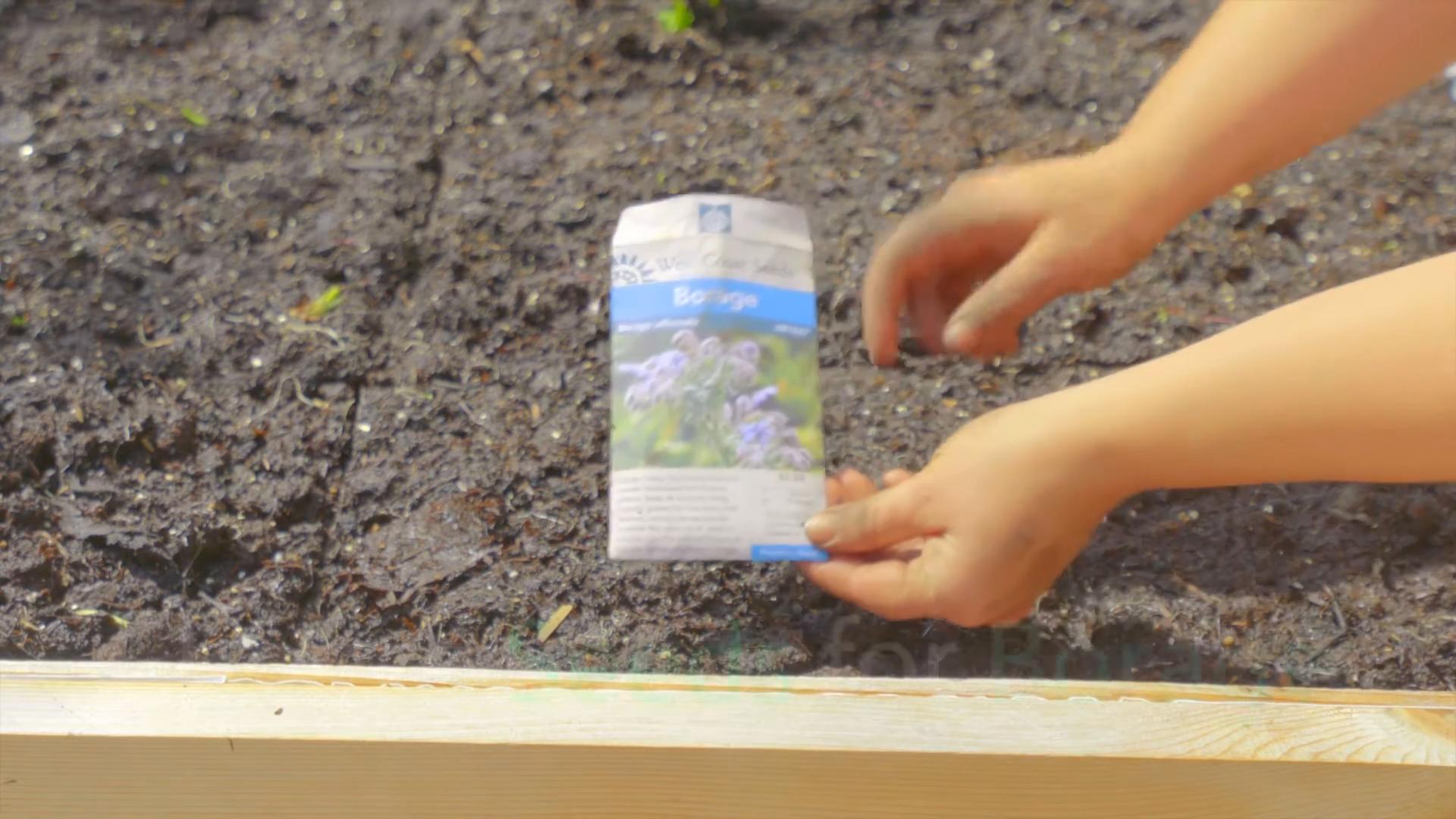
Conclusion
So, there you have it! Growing borage at home is not only achievable but also incredibly rewarding. From its vibrant blue flowers that attract pollinators to its edible leaves and blossoms that add a unique cucumber-like flavor to your dishes, borage is a true garden gem. We’ve walked you through the simple steps, from selecting the right location and preparing the soil to sowing the seeds and providing ongoing care.
But why is this DIY trick a must-try? Because it empowers you to cultivate a sustainable and flavorful addition to your garden and kitchen. Imagine stepping outside your door to harvest fresh borage leaves for a refreshing summer salad or garnishing a cocktail with its delicate blue flowers. You’ll not only be enjoying the fruits (or rather, leaves and flowers) of your labor but also contributing to a healthier ecosystem by attracting beneficial insects to your garden.
Beyond the basic method, there are plenty of ways to personalize your borage-growing experience. Consider companion planting borage with tomatoes, strawberries, or squash, as it’s known to deter pests and improve their growth. You can also experiment with different varieties of borage, such as the white-flowered Alba, for a unique aesthetic touch. If you’re short on space, borage can even be grown in containers, provided they are large enough to accommodate its deep taproot.
Don’t be intimidated if you’re a beginner gardener. Borage is a relatively low-maintenance plant that’s forgiving of minor mistakes. The key is to provide it with plenty of sunlight, well-drained soil, and consistent watering, especially during dry spells. And remember, even if your first attempt isn’t perfect, you’ll learn valuable lessons that will help you succeed in the future.
We wholeheartedly encourage you to give this DIY trick a try. Embrace the joy of growing your own borage and discover the many benefits it has to offer. Not only will you have a beautiful and useful plant in your garden, but you’ll also gain a deeper connection to nature and a greater appreciation for the food you eat.
Once you’ve embarked on your borage-growing adventure, we’d love to hear about your experience! Share your tips, tricks, and photos in the comments section below. Let’s create a community of borage enthusiasts and inspire others to discover the magic of this amazing plant. Your insights could be invaluable to fellow gardeners, and together, we can spread the word about the joys of growing borage at home. So, get your hands dirty, sow those seeds, and let the borage magic begin!
Frequently Asked Questions (FAQ)
What is borage, and why should I grow it?
Borage (Borago officinalis) is an annual herb known for its vibrant blue, star-shaped flowers and edible leaves. It’s a valuable addition to any garden because it attracts pollinators like bees and butterflies, deters certain pests, and its leaves and flowers can be used in salads, drinks, and other culinary creations. The leaves have a mild cucumber-like flavor, while the flowers offer a slightly sweeter taste. Growing borage at home provides you with a fresh, sustainable source of these unique ingredients and contributes to a healthier garden ecosystem.
How much sunlight does borage need?
Borage thrives in full sun, requiring at least 6 hours of direct sunlight per day. While it can tolerate partial shade, especially in hotter climates, it will produce more flowers and have a bushier growth habit when grown in full sun. Insufficient sunlight can lead to leggy growth and reduced flowering.
What type of soil is best for growing borage?
Borage prefers well-drained soil that is rich in organic matter. It can tolerate a wide range of soil types, including sandy, loamy, and clay soils, as long as the drainage is good. Before planting, amend the soil with compost or other organic matter to improve its fertility and drainage. Avoid soils that are consistently waterlogged, as this can lead to root rot. A slightly acidic to neutral soil pH (around 6.0 to 7.0) is ideal.
How often should I water borage?
Water borage regularly, especially during dry spells. Keep the soil consistently moist but not waterlogged. Water deeply when the top inch of soil feels dry to the touch. Avoid overhead watering, as this can promote fungal diseases. Mulching around the plants can help retain moisture and suppress weeds. Once established, borage is relatively drought-tolerant, but regular watering will ensure optimal growth and flowering.
When is the best time to plant borage?
The best time to plant borage is in the spring, after the last frost. You can start seeds indoors 4-6 weeks before the last frost or direct sow them in the garden once the soil has warmed up. In warmer climates, you can also plant borage in the fall for a winter crop. Borage self-seeds readily, so you may find new plants popping up in your garden year after year.
How do I harvest borage leaves and flowers?
Harvest borage leaves when they are young and tender, as they become more prickly and bitter as they mature. Simply snip off the leaves with scissors or your fingers. Harvest the flowers when they are fully open and brightly colored. Gently pluck the flowers from the plant. Both the leaves and flowers are best used fresh, but they can also be dried for later use.
Is borage invasive?
Borage can self-seed readily, which means it can spread quickly in the garden. However, it is not generally considered invasive. You can control its spread by deadheading the flowers before they go to seed or by pulling up unwanted seedlings. In some regions, borage may be considered a nuisance weed, so it’s important to be mindful of its growth habits and take steps to manage its spread if necessary.
Are there any pests or diseases that affect borage?
Borage is generally resistant to pests and diseases. However, it can be susceptible to powdery mildew, especially in humid conditions. To prevent powdery mildew, ensure good air circulation around the plants and avoid overhead watering. Aphids and spider mites can also occasionally infest borage. These can be controlled with insecticidal soap or neem oil.
Can I grow borage in containers?
Yes, borage can be grown in containers, provided they are large enough to accommodate its deep taproot. Choose a container that is at least 12 inches in diameter and depth. Use a well-draining potting mix and water regularly. Container-grown borage may require more frequent watering and fertilization than plants grown in the ground.
So, there you have it! Growing borage at home is not only achievable but also incredibly rewarding. From its vibrant blue flowers that attract pollinators to its edible leaves and blossoms that add a unique cucumber-like flavor to your dishes, borage is a true garden gem. We’ve walked you through the simple steps, from selecting the right location and preparing the soil to sowing the seeds and providing ongoing care.
But why is this DIY trick a must-try? Because it empowers you to cultivate a sustainable and flavorful addition to your garden and kitchen. Imagine stepping outside your door to harvest fresh borage leaves for a refreshing summer salad or garnishing a cocktail with its delicate blue flowers. You’ll not only be enjoying the fruits (or rather, leaves and flowers) of your labor but also contributing to a healthier ecosystem by attracting beneficial insects to your garden.
Beyond the basic method, there are plenty of ways to personalize your borage-growing experience. Consider companion planting borage with tomatoes, strawberries, or squash, as it’s known to deter pests and improve their growth. You can also experiment with different varieties of borage, such as the white-flowered Alba, for a unique aesthetic touch. If you’re short on space, borage can even be grown in containers, provided they are large enough to accommodate its deep taproot.
Don’t be intimidated if you’re a beginner gardener. Borage is a relatively low-maintenance plant that’s forgiving of minor mistakes. The key is to provide it with plenty of sunlight, well-drained soil, and consistent watering, especially during dry spells. And remember, even if your first attempt isn’t perfect, you’ll learn valuable lessons that will help you succeed in the future.
We wholeheartedly encourage you to give this DIY trick a try. Embrace the joy of growing your own borage and discover the many benefits it has to offer. Not only will you have a beautiful and useful plant in your garden, but you’ll also gain a deeper connection to nature and a greater appreciation for the food you eat.
Once you’ve embarked on your borage-growing adventure, we’d love to hear about your experience! Share your tips, tricks, and photos in the comments section below. Let’s create a community of borage enthusiasts and inspire others to discover the magic of this amazing plant. Your insights could be invaluable to fellow gardeners, and together, we can spread the word about the joys of growing borage at home. So, get your hands dirty, sow those seeds, and let the borage magic begin!
Frequently Asked Questions (FAQ)
What is borage, and why should I grow it?
Borage (Borago officinalis) is an annual herb known for its vibrant blue, star-shaped flowers and edible leaves. It’s a valuable addition to any garden because it attracts pollinators like bees and butterflies, deters certain pests, and its leaves and flowers can be used in salads, drinks, and other culinary creations. The leaves have a mild cucumber-like flavor, while the flowers offer a slightly sweeter taste. Growing borage at home provides you with a fresh, sustainable source of these unique ingredients and contributes to a healthier garden ecosystem.
How much sunlight does borage need?
Borage thrives in full sun, requiring at least 6 hours of direct sunlight per day. While it can tolerate partial shade, especially in hotter climates, it will produce more flowers and have a bushier growth habit when grown in full sun. Insufficient sunlight can lead to leggy growth and reduced flowering.
What type of soil is best for growing borage?
Borage prefers well-drained soil that is rich in organic matter. It can tolerate a wide range of soil types, including sandy, loamy, and clay soils, as long as the drainage is good. Before planting, amend the soil with compost or other organic matter to improve its fertility and drainage. Avoid soils that are consistently waterlogged, as this can lead to root rot. A slightly acidic to neutral soil pH (around 6.0 to 7.0) is ideal.
How often should I water borage?
Water borage regularly, especially during dry spells. Keep the soil consistently moist but not waterlogged. Water deeply when the top inch of soil feels dry to the touch. Avoid overhead watering, as this can promote fungal diseases. Mulching around the plants can help retain moisture and suppress weeds. Once established, borage is relatively drought-tolerant, but regular watering will ensure optimal growth and flowering.
When is the best time to plant borage?
The best time to plant borage is in the spring, after the last frost. You can start seeds indoors 4-6 weeks before the last frost or direct sow them in the garden once the soil has warmed up. In warmer climates, you can also plant borage in the fall for a winter crop. Borage self-seeds readily, so you may find new plants popping up in your garden year after year.
How do I harvest borage leaves and flowers?
Harvest borage leaves when they are young and tender, as they become more prickly and bitter as they mature. Simply snip off the leaves with scissors or your fingers. Harvest the flowers when they are fully open and brightly colored. Gently pluck the flowers from the plant. Both the leaves and flowers are best used fresh, but they can also be dried for later use.
Is borage invasive?
Borage can self-seed readily, which means it can spread quickly in the garden. However, it is not generally considered invasive. You can control its spread by deadheading the flowers before they go to seed or by pulling up unwanted seedlings. In some regions, borage may be considered a nuisance weed, so it’s important to be mindful of its growth habits and take steps to manage its spread if necessary.
Are there any pests or diseases that affect borage?
Borage is generally resistant to pests and diseases. However, it can be susceptible to powdery mildew, especially in humid conditions. To prevent powdery mildew, ensure good air circulation around the plants and avoid overhead watering. Aphids and spider mites can also occasionally infest borage. These can be controlled with insecticidal soap or neem oil.
Can I grow borage in containers?
Yes, borage can be grown in containers, provided they are large enough to accommodate its deep taproot. Choose a container that is at least 12 inches in diameter and depth. Use a well-draining potting mix and water regularly. Container-grown borage may require more frequent watering and fertilization than plants grown in the ground.
What are some culinary uses for borage?
Borage leaves and flowers have a variety of culinary uses. The leaves can be added to salads, soups, and stews. They can also be cooked like spinach. The flowers can be used to garnish drinks, salads, and desserts. They can also be candied or frozen in ice cubes. Borage flowers are a traditional ingredient in the Pimm’s Cup cocktail.

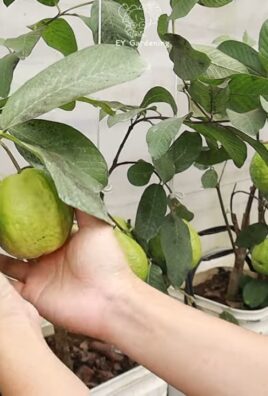
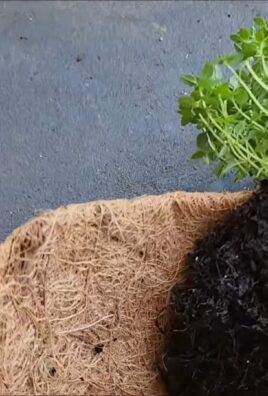
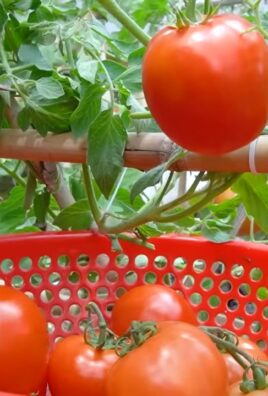
Leave a Comment